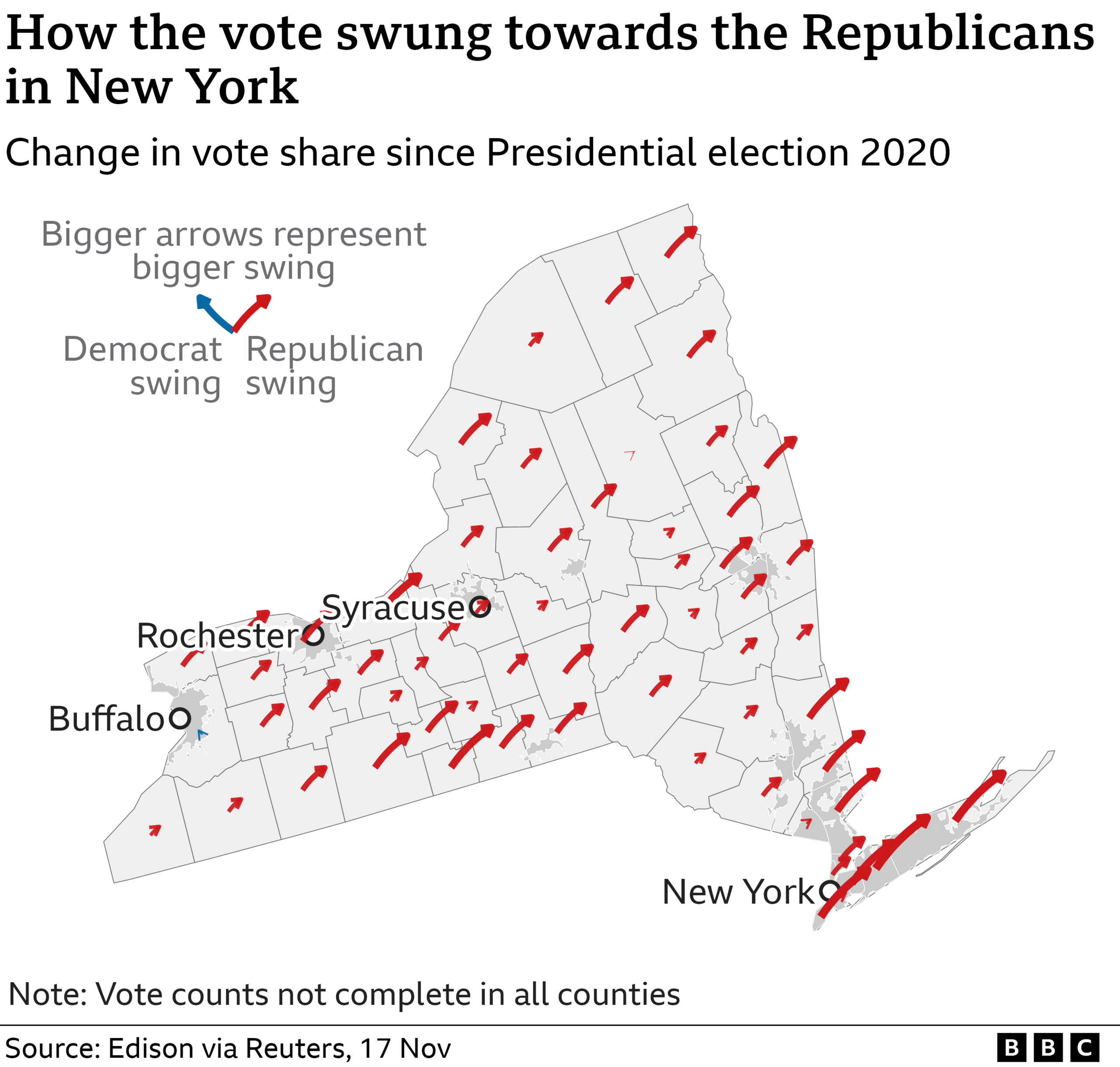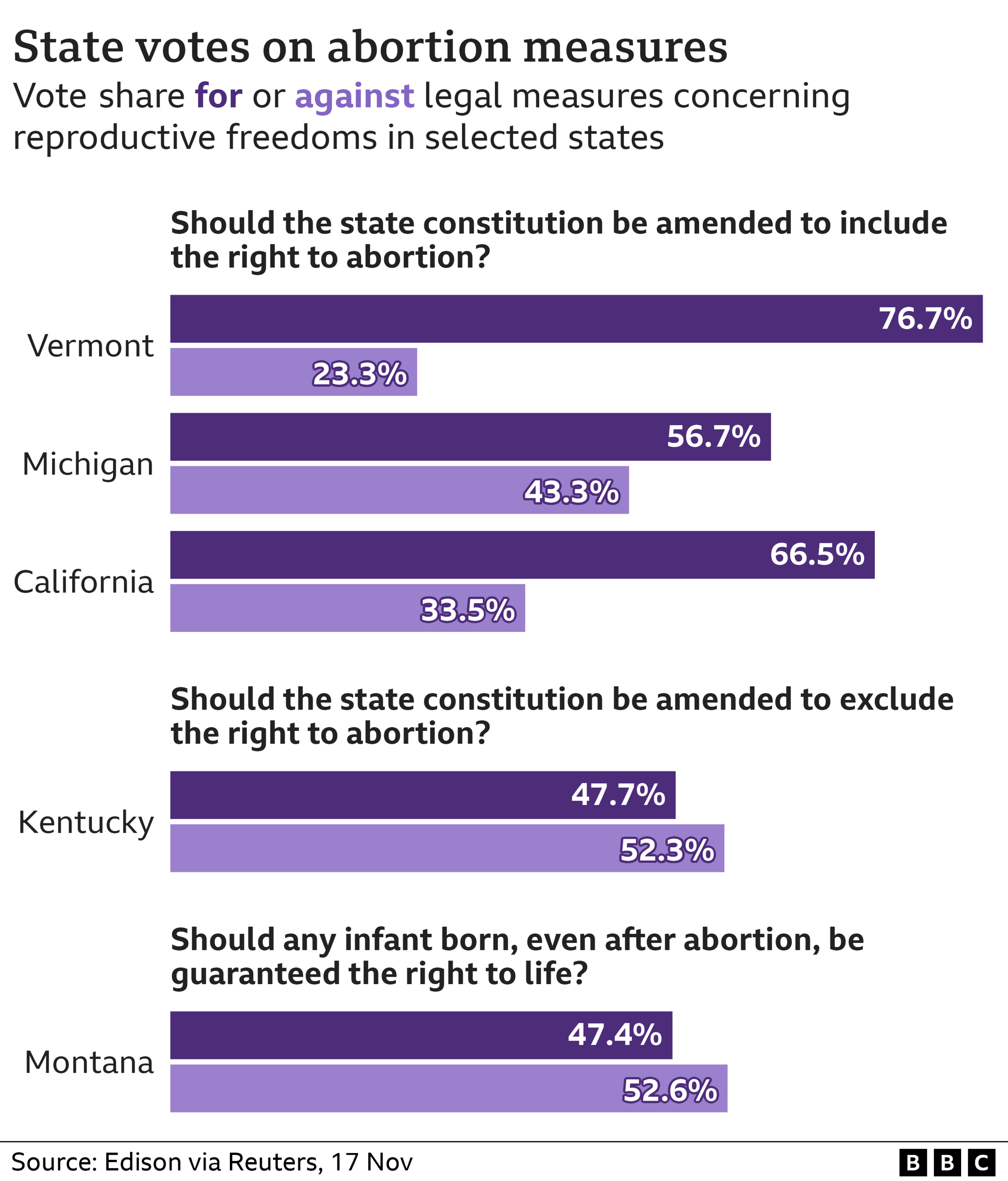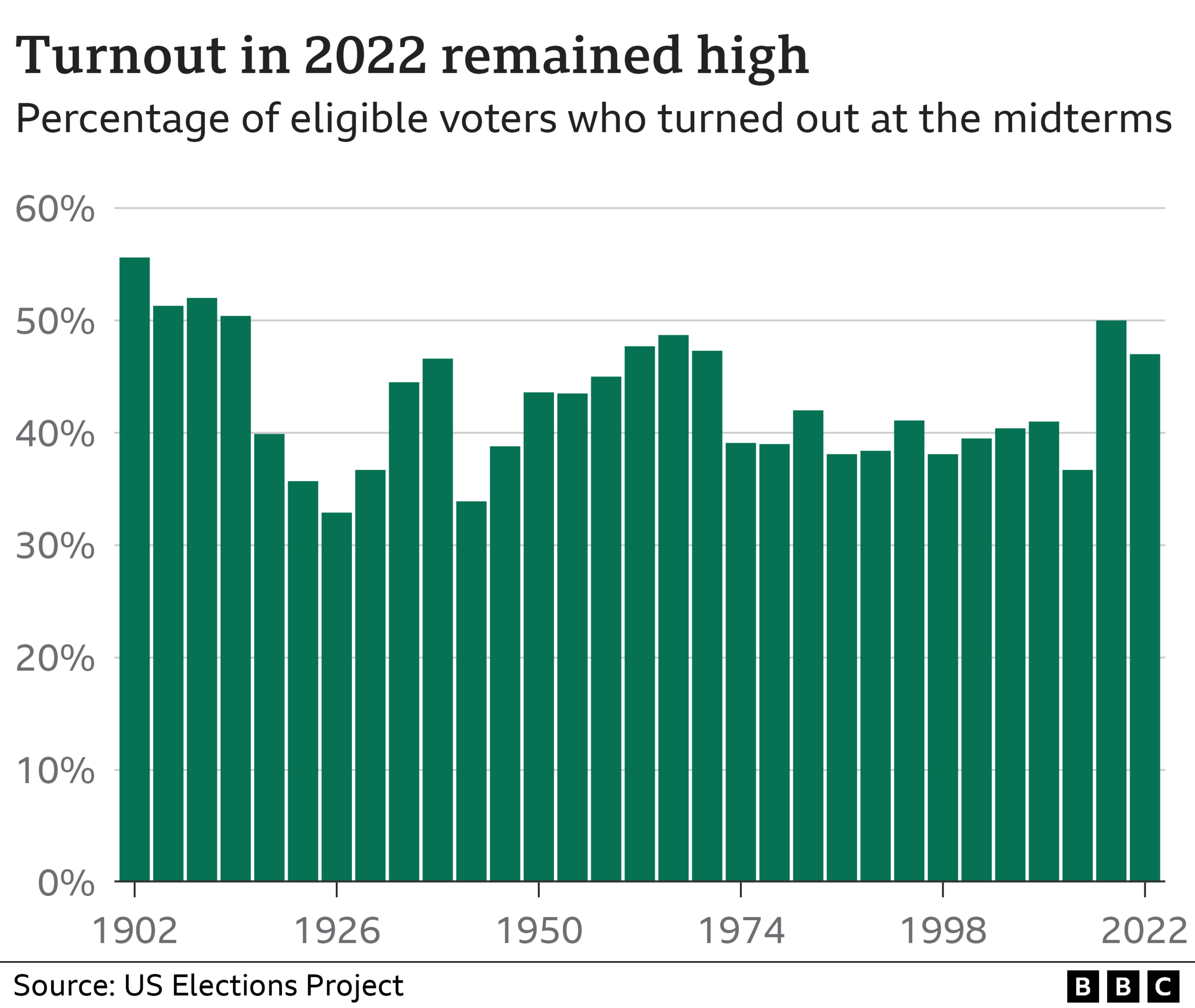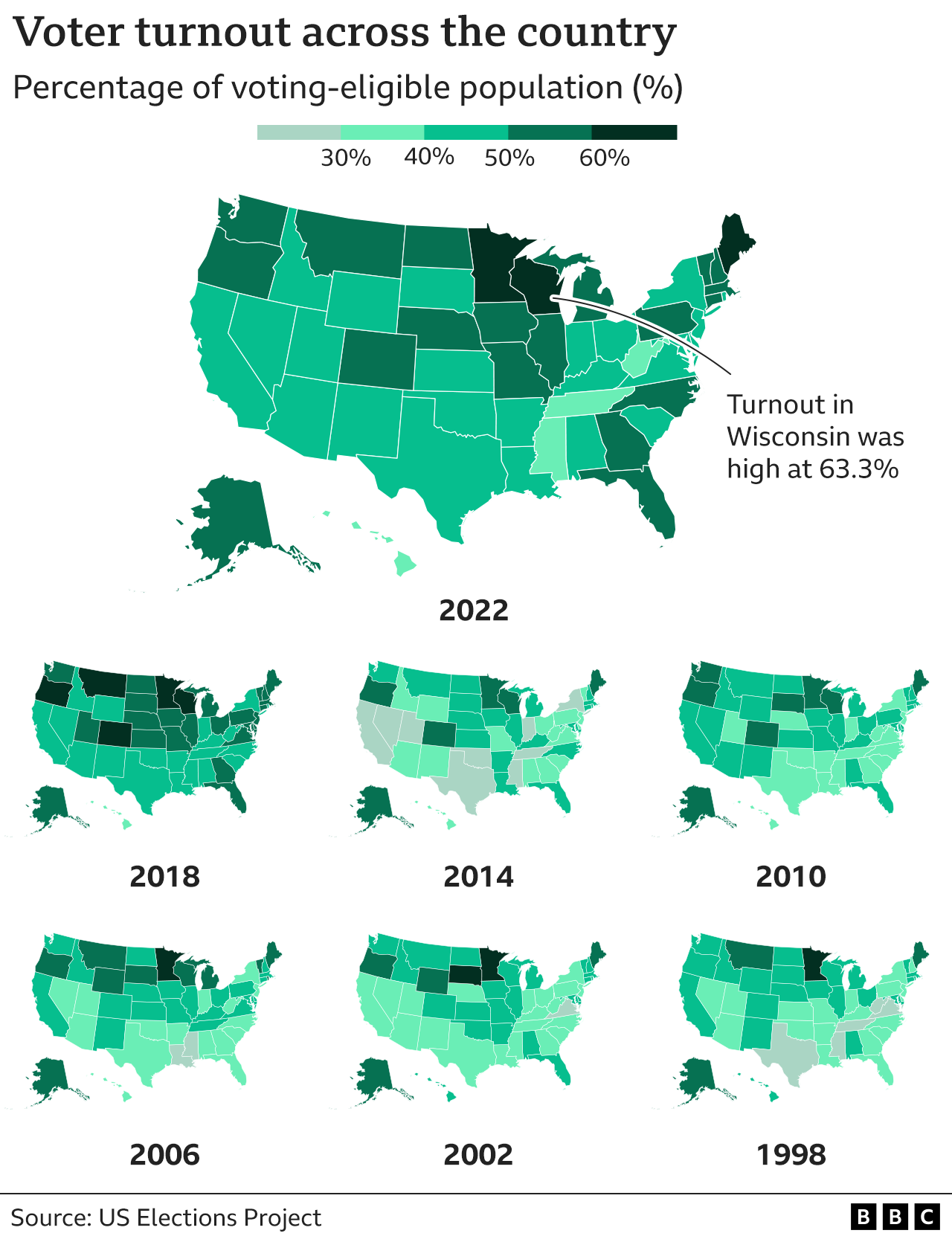US midterm elections results: How the parties did in maps and charts
- Published

The Republicans are projected to take the House of Representatives while the Democrats will retain control of the Senate.
Here is what we know so far about the results.
Republicans take the House
The House of Representatives was declared for Republicans on Wednesday, 16 November, eight days after election day.
They currently have 221 seats, having passed the magic 218 threshold to win control of the lower chamber of Congress, according to CBS News, the BBC's partner in the US.
The Democrats have 213.
Only one House race remains to be called: in California's 13th district, which CBS says is leaning towards the Republican candidate.
Losing the House will make it difficult for President Joe Biden and Democrats to pass laws during the next two years of his term of office.
The maps below may show slightly different figures - they are provided by Reuters and sourced to Edison Research for the National Election Pool.
Map by Reuters
The main surprise in the overall House picture has been the shift to the Republicans in the state of New York, normally seen as a Democratic stronghold. The Republicans managed to take control of four seats here from the Democrats.

The Senate stays in Democrat hands
The Democrats won a close race in Nevada, meaning that control of the Senate no longer hinges on the outcome of a run-off election in Georgia, scheduled for 6 December.
Currently the Democrats have 50 seats and the Republicans have 49.
Before Tuesday's election the Senate was split 50-50 but the Democrats had control through the casting vote of the vice-president Kamala Harris.
Map by Reuters
The Democrats flipped Pennsylvania in the Senate with John Fetterman beating Trump-endorsed candidate Mehmet Oz.
It has been the only Senate seat so far to change hands.
Your device may not support this visualisation
The map below shows the tight race in Georgia, where a run-off will be held in December.
Map by Reuters
Two weeks after the midterms, Senator Lisa Murkowski of Alaska won re-election against a fellow Republican challenger, Kelly Tshibaka.
Presidential hopeful wins in Florida
Ron DeSantis won the governorship in Florida - he is tipped as a potential Republican presidential candidate in 2024 and is a possible rival to former President Donald Trump. Mr DeSantis beat his Democratic opponent by almost 20 percentage points.
The Republicans also won the race for governor in Nevada, taking it from the Democrats.
While, in turn, the Democrats took control of the governor's mansion from the Republicans in both Massachusetts and Maryland.
What drove the vote?

Rising prices and abortion were the two issues top of voters' minds as they cast their ballots, according to the national exit poll.
Almost a third of people surveyed said inflation was the issue that mattered most in deciding how they voted. A large majority of voters also said it had caused them hardship in the past year.
But abortion was another top issue, with 27% of people saying it was their deciding factor, after the Supreme Court overturned a ruling which had given nationwide protection for abortion rights.
That said, voters were sharply divided along party lines - inflation was by far the biggest issue for Republicans, while for Democrats, abortion was top.

The exit poll is conducted as people leave polling places across the country. Voters are asked to fill in a confidential questionnaire with demographic information and their views on candidates, parties and a range of topics.
Those topics include the election process itself. More than two-thirds of voters said they thought that democracy in the US was somewhat or very threatened. Only 9% said it was very secure.

Abortion votes
Five states voted on changes to abortion rules.
Vermont, California and Michigan all voted in favour of including the right to reproductive freedom in the state constitution.
In Kentucky, however, the question is the opposite - whether or not to specifically exclude the right to abortion in the state constitution. The measure was rejected by a narrow margin.

In Montana, voters were not asked about abortion directly but rejected a so-called "born alive" measure.
If passed it would have legally guaranteed any newborn infant, even those born as a result of abortion, the right to medical care that would preserve life.
Voter numbers are high
Midterm elections usually have a relatively low turnout, but over 112 million people went out to vote this year, according to early figures from the US Elections Project.
This is one of the highest turnout figures in decades.


By Wesley Stephenson, Christine Jeavans, Alison Benjamin, Becky Dale, John Walton, Jana Tauschinski and William Dahlgreen.
